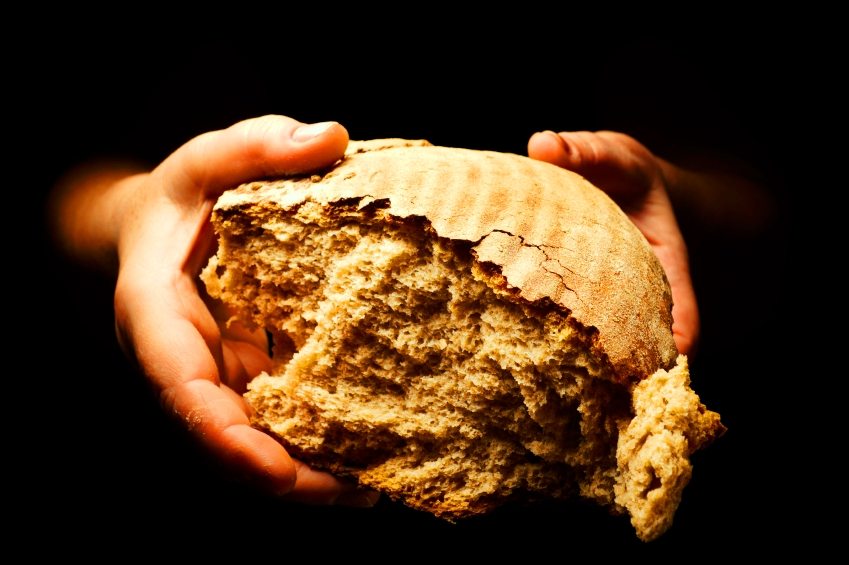Jesus & the Prophets – feeding the multitudes … (10/31/18)
“The feeding of the 5000” (the only “miracle”1 mentioned in all four canonical Gospels – see Matthew 14:13-21, Mark 6:30-44, Luke 9:10-19, & John 6:1-14) and “the feeding of the 4000” (mentioned only in Matthew 15:32-38 & Mark 8:1-10) directly reflect other seemingly miraculous feedings mentioned in the Old Testament (see 1 Kings 17:1-16, 1 Kings 19:1-8, and especially 2 Kings 4:38-44 – along with, of course, the manna that fell from heaven as recorded in Exodus 16:4-362) and indirectly allude to the ceremonial feasts that accompanied the anointing of biblical kings past (see 1 Samuel 9:12-24, 1 Kings 1:9-10, & Daniel 5:1 et al). There is little doubt that the two feedings relay two separate events3, and there is just as little doubt that they were both effectuated & relayed for two separate reasons – with the former taking place near the Jewish community of Bethsaida and implying that The Way of Christ would bring salvation to all Jews4, and the latter taking place near the Gentile region of the Decapolis and showing that the same Way would bring the same salvation to the rest of humanity as well.5

…………………………………………………………………….
1 This feeding was pretty clearly a ritualized Eucharistic one – with everyone present “filled” not because they had eaten their fill, but rather because the smallest of crumbs ingested during any such ceremony was per se spiritually filling. As such, these feedings provided not only a foreshadowing of Jesus’ imminent Passover self-sacrifice (i.e. his crucifixion; the intricate planning of which was almost certainly already underway – see Mark 8:31-33, and also Matthew 16:21-28 & Luke 9:22-27) but also reflected the Jewish todah; the ceremonial sacrifice offered in ancient Israel after a person had been saved by any life-threatening situation (see also the words of John 6:25-27, especially Jesus’ call therein to “work not for the food that perishes, but rather for the food that gives eternal life”) … Indeed, Jesus himself exclaims later in the Scriptures that the two feedings are both meaningful & distinctive (see Matthew 16:9-10 & Mark 8:19-21, where he explicitly states the same), and the fact the his disciples are still filled with doubt at the commencement of “the feeding of the 4000” (see Matthew 15:33 & Mark 8:4) – immediately after having witnessed the 5000-fold feeding – evidences at the very least that the former “miracle” was anything but miraculous.
2 Recalling the same heavenly bread directly referenced by Jesus himself in John 6:30-35 & John 6:53-58, when he claimed that the new Gospel of his ministry was a far better “bread of life” – that those who had eaten of the manna of the Old Covenant had died, while those “who eat of this [i.e. his ministry’s] bread will live forever.”
3 Jesus himself noted that the two events affected different-sized crowds (5000 vs 4000), employed two different amounts of sustenance (five loaves & two fish vs seven loaves & a few fish) – with distinctively different amounts left over thereafter (12 baskets vs 7 baskets), used two different types & sizes of baskets (the large kophinous vs the even larger spyridas – see Acts 9:25, where Paul escaped by being lowered down in the latter), were carried out one after the other (ergo, at two different times during his ministry), and took place in two different locations (near the Jewish town of Bethsaida vs near the Gentile region of the Decapolis).
4 The five loaves recalls the five books of the Jewish Law and the twelve smaller baskets of left-overs clearly refers to the twelve tribes of Israel.
5 The seven loaves and the seven larger baskets of left-overs strongly recall both the seven days that God took to create all that is, as well as the perfect completion symbolized by the number seven itself in Jewish symbology – thus hinting strongly that Jesus’ ministry could metaphorically feed the entirety of humanity.




 ;
;